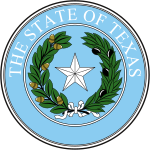| ||||||||||||||||||||||||||||||||||||||||
All 150 seats in the Texas House of Representatives 76 seats needed for a majority | ||||||||||||||||||||||||||||||||||||||||
|---|---|---|---|---|---|---|---|---|---|---|---|---|---|---|---|---|---|---|---|---|---|---|---|---|---|---|---|---|---|---|---|---|---|---|---|---|---|---|---|---|
| ||||||||||||||||||||||||||||||||||||||||
Republican hold Democratic hold Democratic gain Republican: 50–60% 60–70% 70–80% 80–90% ≥90% Democratic: 50–60% 60–70% 70–80% 80–90% ≥90% | ||||||||||||||||||||||||||||||||||||||||
| Elections in Texas |
|---|
 |
|
|
The 2012 Texas House of Representatives elections took place as part of the biennial United States elections. Texas voters elected state senators in all 150 State House of Representatives districts. The winners of this election served in the 83rd Texas Legislature, with seats apportioned according to the 2010 United States census. State representatives serve for two-year terms.
At the beginning of the Eighty-second Texas Legislature following the 2010 Texas State House of Representatives elections, the Democrats held 49 seats to the Republicans' 101.
As of 2022, this is the last time Democrats won a state house seat in Chambers or Galveston county. This is also the first time a Republican has ever won a state house seat in Jefferson County (although the incumbent was a former Democrat who switched parties after winning re-election in 2010).[1][2]
- ^ "Legislative Reference Library | Legislators and Leaders | Texas Legislators: Past & Present". lrl.texas.gov. Retrieved February 24, 2022.
- ^ Ramsey, Ross (December 12, 2010). "TribBlog: Ritter Confirms He's Switching Parties". The Texas Tribune. Retrieved February 24, 2022.



